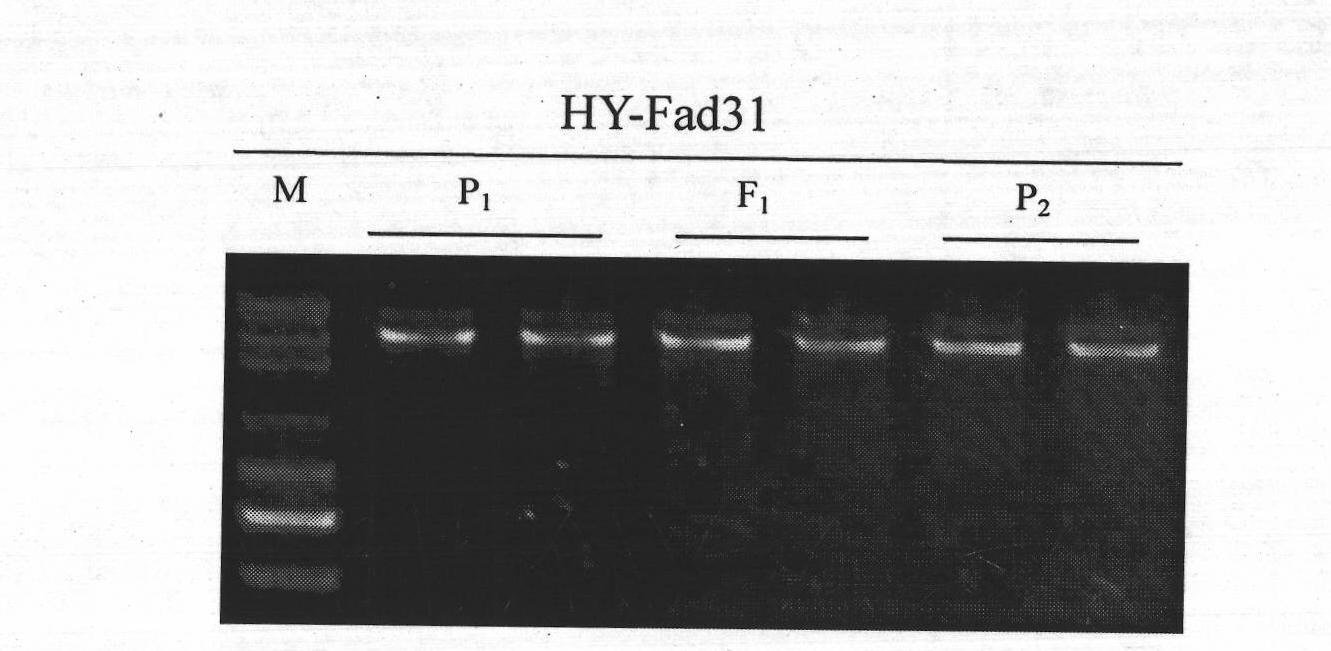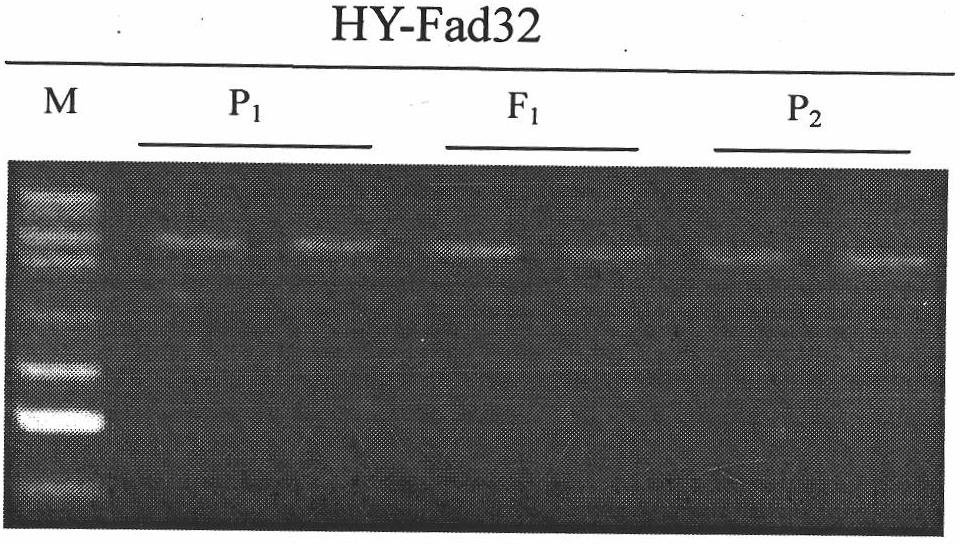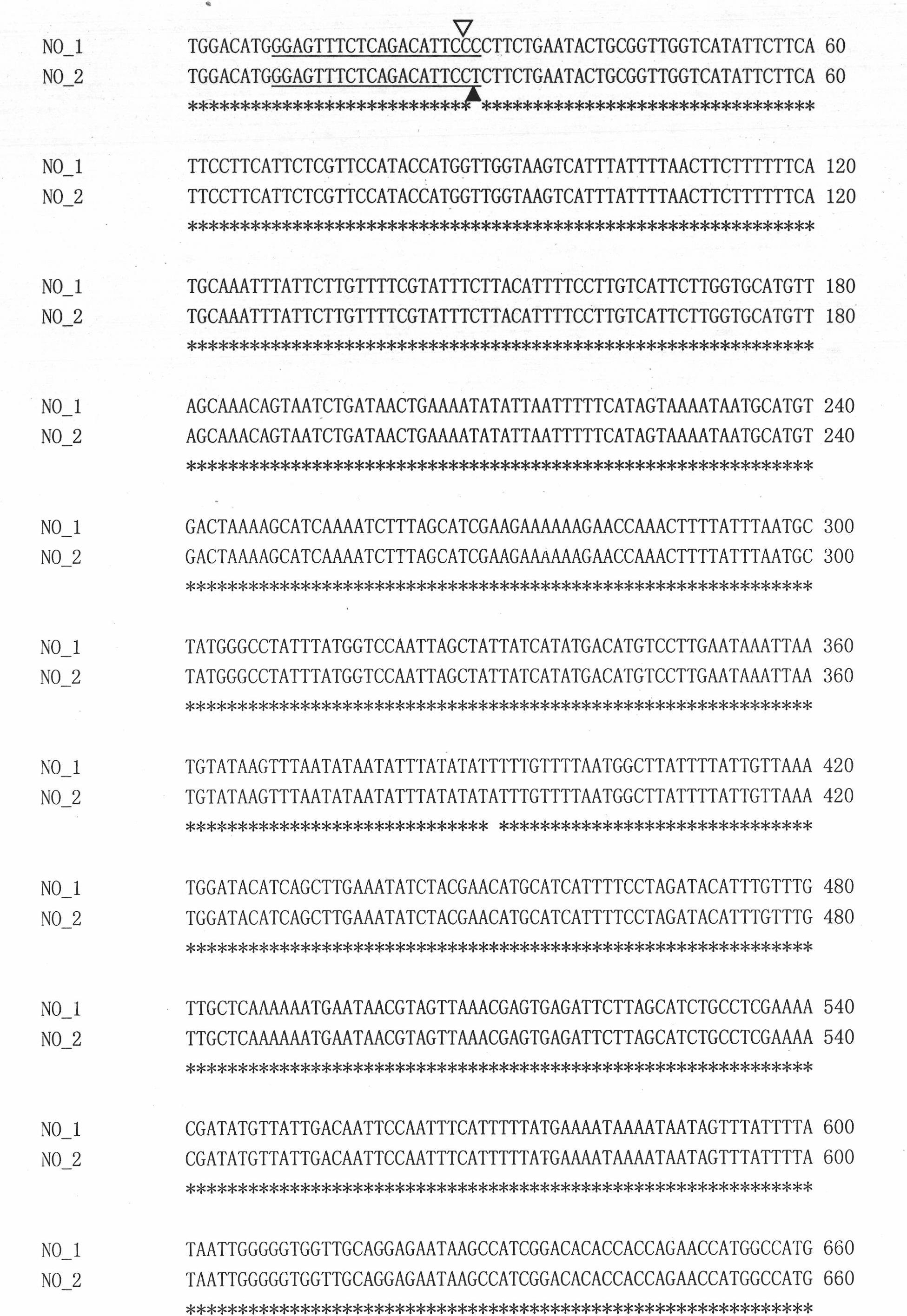Low-linolenic-acid molecular marker for brassica napus, and preparation method and application of low-linolenic-acid molecular marker
A cabbage rape, molecular marker technology, applied in biochemical equipment and methods, DNA/RNA fragments, microbial determination/inspection, etc., can solve problems such as application limitations, shorten the breeding period, speed up the process, and reduce the breeding work. amount of effect
- Summary
- Abstract
- Description
- Claims
- Application Information
AI Technical Summary
Problems solved by technology
Method used
Image
Examples
Embodiment 1
[0047] 1. Preparation F 1 Generation of hybrids and establishment of double haploid (DH) populations:
[0048]In this example, the Brassica napus strain A A254 with low linolenic acid content (linolenic acid content is 2.28%) bred by this unit (the seeds of this material have been sent to Wuhan City, Hubei Province on November 20, 2009 Preserved by the China Center for Typical Culture Collection in Wuhan University, its preservation number is CCTCC-P200909, the biological material deposited has been disclosed in its parent application, the application number of the parent application is 200910273437.1, and its publication number is: CN101818196A, its The public date is September 01, 2010) as the female parent, and the rapeseed high-generation breeding line A A177 with common linolenic acid content (linolenic acid content is 7.78%) (the seeds of this material have been delivered on November 20, 2009 Preserved by the Chinese Type Culture Collection Center in Wuhan University, W...
PUM
 Login to View More
Login to View More Abstract
Description
Claims
Application Information
 Login to View More
Login to View More - R&D
- Intellectual Property
- Life Sciences
- Materials
- Tech Scout
- Unparalleled Data Quality
- Higher Quality Content
- 60% Fewer Hallucinations
Browse by: Latest US Patents, China's latest patents, Technical Efficacy Thesaurus, Application Domain, Technology Topic, Popular Technical Reports.
© 2025 PatSnap. All rights reserved.Legal|Privacy policy|Modern Slavery Act Transparency Statement|Sitemap|About US| Contact US: help@patsnap.com



